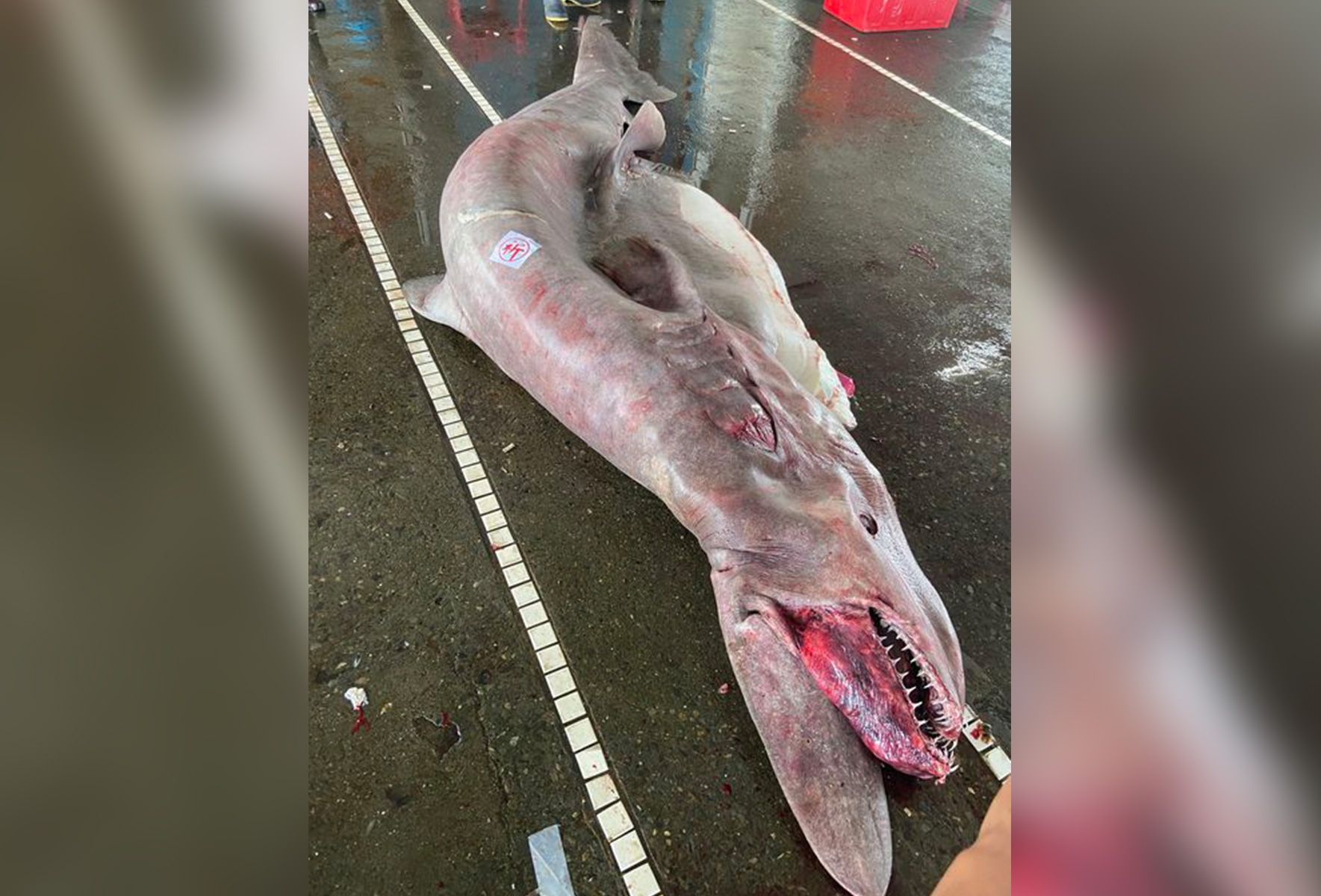'Living Fossil' Deep-Sea Shark Pregnant With Six Pups Pulled From Ocean
An enormous, 1,760-pound goblin shark has been caught off the coast of Taiwan, carrying six large pups inside.
The shark is considered to be the largest of its kind to have been captured in these waters, and was close to giving birth to her six young.
"On June 13, in Yilan, a fishing port in Nanfangao, a rare prehistoric deep-sea shark 'Goblin shark' (Mitsukurina owstoni) was caught, and it weighed 800 kilograms [1,763 pounds]. It is currently the largest 'Goblin shark' caught in Taiwan," the Taiwan Ocean Artistic Museum explained in a translated Facebook post, showing the shark's characteristically ugly face.
Photo of the rare prehistoric deep-sea goblin shark (Mitsukurina owstoni), in Yilan, a fishing port in Nanfangao. It is currently the largest goblin shark ever recovered in Taiwan. Taiwan Ocean Artistic Museum
Goblin sharks are bizarre-looking creatures, with a long protruding snout and a clutch of spiky teeth. These monsters of the deep are usually found fathoms below the surface. The sharks spend most of their days near the seafloor at depths of around 1,000 to 3,000 feet, according to the Australian Museum. They usually grow to between 10 and 13 feet long.
"This species has translucent skin, pink body and evil fangs," the museum wrote in the post. "Because the head is shaped like a goblin, it is called 'Goblin shark'. Also known as 'Devil Shark', it belongs to the ancient shark family and is a very rare living fossil teaching material."
Goblin sharks are rarely seen, and few interactions with humans have been recorded. A handful of the creatures have been removed from the ocean, and there have been attempts to keep them in aquariums, but none of them lasted for more than a few days.
The Northwest Pacific, including waters off Japan and Taiwan, is thought to be a hotspot of this species: after a strong earthquake off northern Taiwan in 2003, over 100 goblin sharks were caught at depths of around 2,000 feet.
In another post, the museum showed the six pups that were recovered from within the mother. Each juvenile was around 4 feet long, weighing roughly 8 pounds. "Each baby shark has a nutrient capsule in its belly, It is indeed grown by the nutrient sac," the museum wrote.
Little is known about goblin shark reproduction, but females are viviparous, giving birth to live young rather than egg sacks.
"The baby shark's teeth are already formed. So, basically this mother shark should not be too far from her due date," the museum posted.
Stock image of a carcass of preserved goblin shark under blue light. There have been attempts to keep them in aquariums, but none of them lasted for more than a few days. ISTOCK / GETTY IMAGES PLUS
The unfortunate shark and her young were caught accidentally, the museum explained, by fishers employing bottom trawling to catch their fare. This fishing practice is banned in many regions of the oceans due to the effects it has on seafloor species and the amount of bycatch it causes. One study in the journal Fisheries Research from 2018 found that bottom trawling accounts for nearly 60 percent of annual fisheries' discards, amounting to about 6.6 million tons each year.
Bottom trawling is legal off the waters of Taiwan, however.
In the post, the museum explains that the fishermen initially wanted to sell the sharks to a restaurant to be eaten, but the museum successfully claimed the bodies for display and education. "After fighting for it, the Taiwan Ocean Art Museum bought it as a future marine education textbook. It is expected to be exhibited in the Taiwan Ocean Art Museum in the future!"
Do you have a tip on a science story that Newsweek should be covering? Do you have a question about goblin sharks? Let us know via science@newsweek.com.
Source: Newsweek


